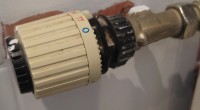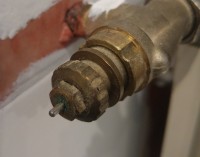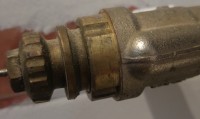Hello.
I planned to replace the thermostatic head with a different one (at the moment there is Danfoss). By the way, I have read about the possibility of covering the valve (radiator) to increase the flow of hot water. I read that there should be numerical marks and a dot / incision, as a reference point, which were to improve the lacing. However, I do not find something like this on my valve. Can I ask for help in determining whether this valve can be vented and, if so, how?
greetings
I planned to replace the thermostatic head with a different one (at the moment there is Danfoss). By the way, I have read about the possibility of covering the valve (radiator) to increase the flow of hot water. I read that there should be numerical marks and a dot / incision, as a reference point, which were to improve the lacing. However, I do not find something like this on my valve. Can I ask for help in determining whether this valve can be vented and, if so, how?
greetings





